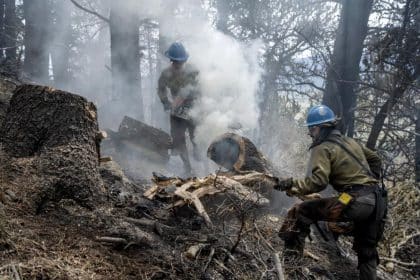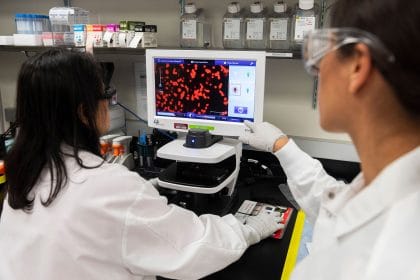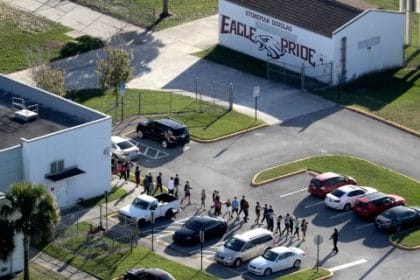Government Leaders Renew Calls for PFAS Chemical Cleanup — How Quantum Can Help
COMMENTARY

Congress is calling for federal agencies such as the Department of Energy to address the per-and polyfluoroalkyl substances that have been found at operational sites. Emerging technologies like quantum computing could be one of the tools deployed to help assess, mitigate and remediate these “forever chemicals.”
In a Feb. 1, 2024, letter to the Government Accountability Office, key members of the House Energy and Commerce Committee requested that the GAO examine DOE efforts to access and clean up PFAS chemicals, which degrade slowly and persist in the environment. In addition, the Environmental Protect Agency has proposed adding nine new PFAS chemicals to its hazardous materials list.
The urgency for DOE to take action centers around the EPA’s proposed regulatory changes and a new rule on PFAS that could be finalized in March. According to the lawmakers’ letter, if finalized, “these and other proposed regulatory actions could have significant impacts on DOE’s efforts and costs to clean up contaminated sites.” As part of the Biden administration’s government-wide call to “accelerate efforts to protect Americans from PFAS contamination and exposure,” the DOE has identified more than 50 contaminated sites where forever chemicals have been used in the past.
This is a highly complex challenge with a massive set of variables, given the volume of compounds and the wide range of products containing PFAS. The scale of this challenge requires the government to use the full array of existing and emerging technologies to drive solutions, including quantum computing.
As discussed by the National Association of Manufacturers, annealing quantum computing, a commercially available quantum computing technology, can work synergistically with classical computers in quantum-classical hybrid technologies to tackle optimization problems, many of which may be able to address PFAS remediation and cleanup efforts.
For example, understanding the pathways and speed of PFAS contamination is necessary to the development of health and environmental mitigation scenarios. Batelle, global research and development organization, says modeling PFAS contamination could be used to evaluate the risk of, remediate and determine the source of the chemicals.
Quantum-hybrid technologies have provided answers that are faster and/or more efficient for a variety of private-sector problems. Quantum’s ability to arrive at optimal decisions that account for multiple layers of constraints and analysis of complex data is often beyond the scope of classical computers alone, and the government would be wise to consider emerging technologies such as quantum computing in its overall strategy to address PFAS.
Quantum annealing has already demonstrated how businesses can optimize processes. Likewise, research illustrating how quantum annealing can accelerate optimization shows that quantum might provide better insight into PFAS contamination, optimize mitigation and determine the most effective remediation actions.
Currently, cloud-accessible quantum-classical hybrid applications are also providing solutions to optimization problems, such as reducing carbon emissions by approximately 60% during waste collection in an area of Tokyo, Japan. In the logistics industry, one quantum-hybrid application supported optimizing Pier 300 at the Port of Los Angeles, increasing deliveries per crane by 60%.
Quantum applications have been developed to reduce waste in automotive paint shop operations, and could potentially address the presence of PFAS in commercially available paints, varnishes and coatings. Once the most harmful PFAS are identified, building quantum applications to explore ways to limit these harmful chemicals in manufacturing processes could help reduce new contamination while balancing the impact on the supply chain.
Finally, quantum could also be used to optimize patient trials that examine the impact of PFAS on human health. To date, only a handful of PFAS chemicals have been studied, and integrating quantum computing into patient trials could help standardize trial design, allowing researchers to more effectively collect the useful data that could help identify the contamination threats.
Tackling PFAS is a multi-pronged effort that calls for industry, academic and government collaboration. Incorporating commercially available emerging technologies, such as annealing quantum computing and quantum-hybrid applications, should be incorporated into this collaboration. While DOE and other departments across the U.S. government are examining PFAS, engaging with industry and exploring how cloud-based quantum computing technology can address the spectrum of PFAS problems is a necessity.
Instead of waiting for a replacement chemical that could be years away, it is time to break down this societal problem and identify which parts of the problem can be solved today utilizing quantum annealing and quantum-classical hybrid applications.
Dr. Alan Baratz is CEO of D-Wave and was the first president of JavaSoft at Sun Microsystems. D-Wave develops and delivers quantum computing systems, software and services. He can be reached on X.
























